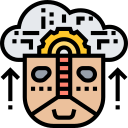AI Technologies Transforming Patient Care
Artificial Intelligence is rapidly redefining the landscape of modern healthcare, paving the way for more efficient, accurate, and personalized treatment approaches. By leveraging machine learning, natural language processing, and data analytics, healthcare organizations worldwide are seeing significant advancements in patient diagnostics, care coordination, and clinical decision-making. As adoption accelerates, AI technologies are becoming indispensable tools, fostering a new era where optimal patient outcomes, enhanced workflows, and cost-effective care go hand in hand.
Revolutionizing Diagnostics and Early Detection
AI-Powered Imaging Analysis
The use of AI for interpreting radiology images is setting new benchmarks in diagnostic accuracy. Machine learning algorithms trained on extensive datasets can identify patterns in X-rays, MRIs, and CT scans with remarkable precision. These technologies assist radiologists by highlighting suspicious areas, suggesting potential diagnoses, and even quantifying the likelihood of certain conditions. The integration of AI reduces time to diagnosis and minimizes human error, making it particularly impactful for time-sensitive illnesses such as cancer and stroke. Patients benefit from faster results and more targeted treatments, while healthcare professionals are empowered to focus on complex cases requiring nuanced expertise.
Early Disease Prediction
By analyzing vast amounts of patient data, AI enables clinicians to identify risk factors and warning signs for diseases long before symptoms manifest. Predictive models can synthesize information from electronic health records, genetic profiles, and lifestyle data to forecast an individual’s susceptibility to conditions like diabetes, heart disease, or neurodegenerative disorders. These insights facilitate earlier interventions—ranging from preventive lifestyle recommendations to proactive screenings—helping patients mitigate risks and avoid the progression of chronic illnesses. The power of early prediction not only improves patient outcomes but also reduces the overall burden on healthcare systems.
Enhanced Pathology and Genomics
AI has made significant strides in pathology, where deep learning tools analyze digital slides to pinpoint cancerous cells and grade tumors with exceptional granularity. Moreover, by integrating genomics, AI can interpret complex genetic information to uncover mutations and susceptibility markers linked to various diseases. This convergence fosters a deeper understanding of unique patient profiles, guiding personalized treatment plans and targeted therapies. With these capabilities, clinicians are armed with data-driven insights that were previously impossible to obtain, bringing precision medicine closer to the forefront of routine care.

Precision Medicine and Tailored Therapies
Precision medicine leverages AI to design customized treatment strategies that reflect a patient’s genetic makeup, medical history, and environmental influences. Algorithms process this complex information to suggest medications, dosages, and intervention timelines that are uniquely suited to the individual. For cancer and rare genetic diseases, this means therapies can be chosen with a higher likelihood of success and fewer adverse reactions. By eliminating the “one-size-fits-all” paradigm, AI is enabling treatments that are safer, more effective, and deeply personalized, leading to improved patient satisfaction and outcomes.
Adaptive Patient Monitoring
Continuous patient monitoring through AI-driven wearable devices and remote sensors is transforming how clinicians manage chronic conditions and post-acute care. These technologies collect and analyze real-time physiological data, detecting subtle changes that could signal deterioration or improvement. When anomalies arise, AI systems can trigger alerts for both patients and healthcare providers, prompting timely interventions. This proactive oversight not only enhances safety but also empowers patients to take a more active role in managing their health, creating a collaborative dynamic between individuals and care teams.
Virtual Health Assistants
AI-powered virtual assistants are enhancing patient engagement by delivering reliable, personalized health information and support outside the clinical setting. These digital companions can answer medical queries, remind patients about medication schedules, and provide education about chronic disease management. Such tools foster constant communication and encourage adherence to care plans, all while alleviating the burden on healthcare staff. By providing patients with immediate access to guidance and resources, virtual assistants help bridge gaps in care and promote consistent, informed participation in health management.
Streamlining Workflow and Clinical Decision Support
Clinical decision support systems infused with AI analyze patient data in real time, offering recommendations that are grounded in the latest evidence and best practices. These platforms consider symptoms, lab results, and medical histories to suggest diagnostic possibilities or flag potential complications. By synthesizing vast amounts of information, AI assists clinicians in making informed choices, reducing cognitive overload and the likelihood of errors. This technological guidance is especially vital in complex or ambiguous cases, where traditional decision trees may fall short.
Routine tasks such as appointment scheduling, billing, and documentation often consume significant clinician time. AI-driven automation tools can manage these functions efficiently, extracting relevant information from electronic records, generating reports, and ensuring compliance with stipulated procedures. By handling these repetitive responsibilities, AI frees up healthcare providers to focus on patient interactions and critical care tasks. The automation of administrative processes contributes to reduced burnout, lower operational costs, and a smoother, more responsive patient experience.
AI systems are playing a crucial role in triaging patients, managing waiting lists, and allocating resources based on real-time needs and predictive analytics. By evaluating the severity of cases and the availability of facilities or personnel, these tools help ensure that the most urgent needs are addressed first. Accurate prioritization leads to shorter wait times, optimal utilization of resources, and improved patient flow throughout healthcare institutions. This capability is particularly valuable during periods of high demand or crisis, enhancing resilience and responsiveness.

